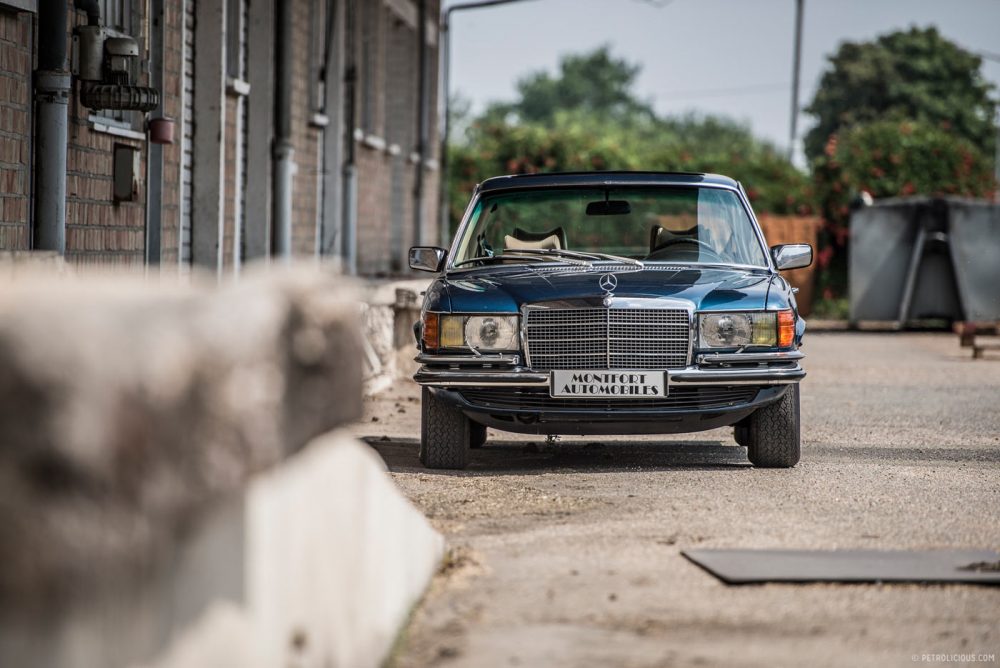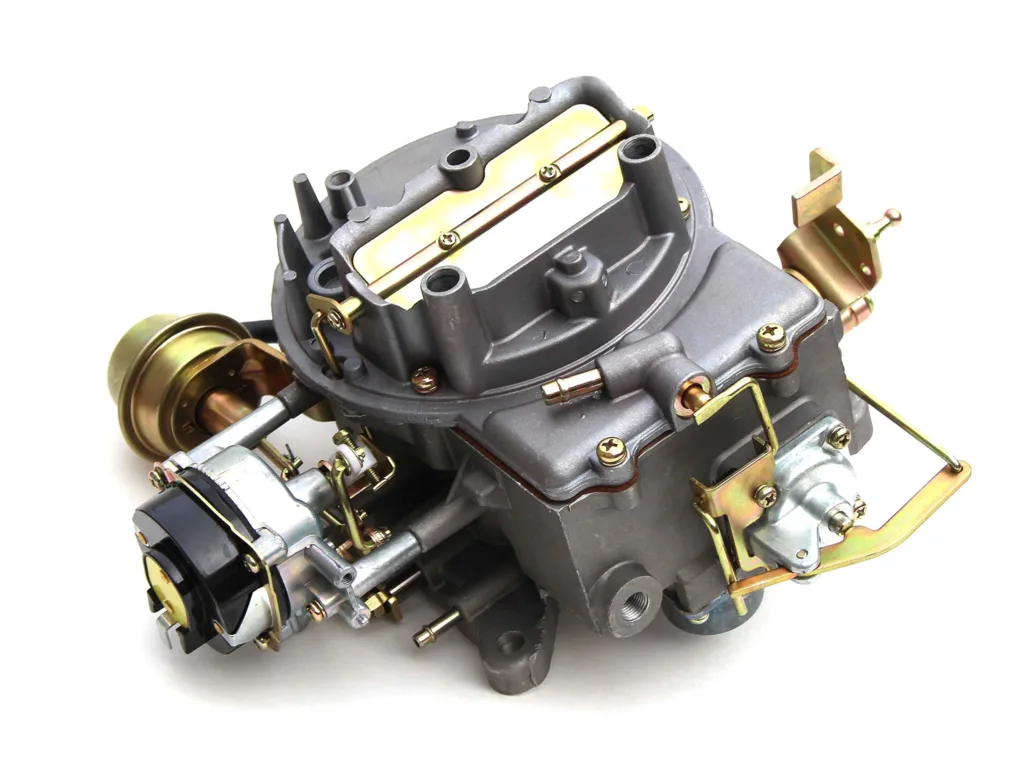For many car enthusiasts, a carburetor is an iconic part of the classic car experience. Not only do they provide a unique sound during acceleration, but they also offer a nostalgic feeling for those who remember them from their childhood. Carburetors are still used in cars today, although they are becoming increasingly rare as fuel injection systems become more reliable and affordable.
A carburetor is essentially a device that mixes fuel and air together before sending it into the engine cylinders for ignition. It sits atop the engine block beneath the air filter and operates using vacuum power and cable controls. In order to work properly, the carburetor needs to be adjusted so that it can provide the right ratio of fuel to air. If this is not done correctly, then it can lead to poor performance and even damage to your engine.
Despite their decreasing use in cars, carburetors are still commonly found in small engines such as lawnmowers, generators, and concrete mixers. They are also still used in some motorcycles where they provide a unique sound that many riders prefer over fuel injection systems. The 1994 Isuzu Pickup was the last car sold in the US with a carburetor as most cars had switched to fuel injection during the mid-to-late 1980s with very few being sold with carbs ater 1991.
Carburetors offer drivers an exciting experience when driving classic cars due to their unique sound and feel. While their use is decreasing in new vehicles, you can still find them in vintage cars or small engines such as those found on motorcycles or lawnmowers. Whether you’re looking for an old-fashioned experience or just want to see what all the fuss is about, taking a ride with a carbureted car can be a fun way to spend your day!
Do Any Vehicles Still Utilize Carburetors?
No, cars no longer use carburetors. Since the 1990s, most car and truck manufacturers have switched away from using carburetors and now use fuel injection systems instead. Fuel injection systems are more efficient, provide better fuel economy and lower emissions than carburetors. Additionally, diesel engines have always used fuel injection instead of carburetors. Carburetors are still used by some small engines such as lawnmowers, generators and concrete mixers, as well as some motorcycles.

The Last Car to Feature a Carburetor
The last car sold in the United States with a carburetor was the 1994 Isuzu Pickup. Powered by a 2.3-liter inline-four engine, this rear-wheel drive vehicle was offered with a five-speed manual gearbox and featured the traditional device for mixing fuel and air to feed the cylinders. This old-school technology was replaced by fuel injection soon after due to its lack of efficiency and precise control of combustion.
When Did Cars Begin Using Carburetors?
In the United States, most cars with carburetors were produced up until the mid to late 1980s. By 1991, almost all cars sold in the US had transitioned to fuel injection, making carburetors increasingly rare in newer vehicles. However, some pickup trucks still had carburetors until as late as 1994 or 1995.
Today, carburetors are relatively uncommon in modern vehicles and are rarely found outside of classic cars and vintage motorcycles. While new motorcycles are still available with carburetors, they are becoming less common as modern bikes increasingly rely on fuel injection for improved performance and reliability.
The Role of Carburetors in Automobiles
Carburetors are devices found in cars and other internal combustion engines that combine fuel and air in the correct ratio for efficient combustion. They act as a control for the amount of air and fuel entering the engine. The carburetor is connected to a venturi tube, which creates a vacuum to draw fuel from the fuel bowl into the airstream, thus atomizing and mixing it with incoming air. A butterfly valve at the end of the venturi tube adjusts the mixture by controlling the amount of air flowing through it. The carburetor also contains other components such as jets, float chamber, accelerator pump, idle mixture screw, throttle plate, choke valve, and air bypass valve. All these parts work togeher to keep your engine running smoothly.
The Benefits of Carbureted Cars
No, carbureted cars are not better than fuel-injected cars. Carburetors were the mainstay of automotive fuel delivery for over a century, but they are now largely obsolete and have been replaced by fuel injection systems. Fuel injection is a more precise and efficient way of delivering fuel to an engine, resulting in improved performance, greater fuel economy, and lower emissions. Fuel injection also allows for the use of alternative fuels such as ethanol or biodiesel blends, which would be impossible with a carburetor. Fuel injection is also easier to maintain sine it requires fewer adjustments and has fewer moving parts compared to a carburetor. All these factors make it clear that modern drivers should opt for a fuel-injected engine over a carbureted one.

Do New Cars Still Use Carburetors?
No, no new production cars on the market today use carburetors. All modern vehicles use computerized fuel injection systems to manage the combustion process. Fuel injection systems are much more efficient than traditional carburetors, allowing for better performance and fuel economy. Additionally, fuel injection systems allow for a smoother running engine, as well as easier cold starts.
The Longevity of Carbureted Engines
Carbureted engines can potentially last longer than fuel-injected engines due to the simplicity of their design. Unlike fuel injection systems, carburetors are not equipped with any electrical components or return lines, which makes them much easier to install and maintain. This can result in a longer lifespan for the engine overall because the components are less prone to wear and tear. Additionally, carburetors are favored in motor sports because of their proven reliability and durability over time.
The Longest-Running Car: A Look at the Oldest Car Still Running
The oldest car stll running is known as “La Marquise,” a steam-powered car built in 1884 by French inventor, Gustave Trouvé. The car is driven using a hand crank and has three forward gears, one reverse gear and one neutral gear. It has a top speed of 25 km/h (15 mph) and can accelerate from 0 to 14 km/h (9 mph) in 10 seconds. La Marquise has been in use since it was built and is still used today for demonstrations and parades. It has been displayed at the Conservatoire National des Arts et Métiers in Paris since 1895.
La Marquise is considered to be the first modern automobile and is powered by a two-cylinder steam engine with a total displacement of 1,664 cm3 (101 cubic inches). The engine produces 10 horsepower at 500 rpm, allowing it to reach its top speed of 25 km/h (15 mph). The car features an open body with seating for four passengers. It also features primitive brakes on the rear wheels, made from leather straps that wrap around the wheel rims.
The unique vehicle was added to the United States’ National Historic Vehicle Register in 2019 as an example of 19th century automotive technology. La Marquise is one of few surviving examples of 19th century automobiles and serves as an important reminder of the beginnings of automotive history.
The End of the Carburetor: When Did It Go Away?
The carburetor was beginning to be phased out in the late 1980s and early 1990s. By 1990, most car manufacturers had already begun transitioning to fuel injection. For instance, Hyundai switched to fuel injection in mid-1989 for its 1990 models, indicating that the carburetor was becoming obsolete even for budget cars. By the mid-1990s, most cars had fully transitioned to fuel injection, and by the late 2000s virtually all cars used fuel injection technology. The use of carburetors has become increasingly rare since then.

The Engine with a Carburetor
The carburetor is a device used to mix air and fuel in an internal combustion engine. It is most commonly found in petrol engines, where it alows the engine to run on a variety of different fuel-air mixtures. A petrol engine, also known as a spark ignition engine, uses the carburetor to create a combustible mixture of air and gasoline which is then ignited by a spark from the spark plug. This combustion process creates the power needed to drive the car or other vehicle. Diesel engines are not typically equipped with carburetors and instead use direct injection systems for fuel delivery.
Does a Fuel Injected Car Have a Carburetor?
No, a fuel injected car does not have a carburetor. A fuel injection system is a more complex and precise method of delivering fuel to an engine than a carburetor. It consists of several sensors, electronic components and a fuel pump installed inside the gas tank to precisely control fuel flow. This eliminates the need for a carburetor and its associated parts.
The Decline of Carburetors in Automobiles
Carburetors are no longer used in modern cars for a few reasons. Firstly, carburetors are not very efficient when it comes to fuel economy. The amount of air and fuel that is mixed together is often too much or too litle for the engine, resulting in decreased performance and wasted fuel. Secondly, the mechanical nature of carburetors makes them prone to wear and tear, meaning they often need frequent maintenance in order to keep them running properly.
Finally, the introduction of computer-controlled engines has allowed automakers to optimize the fuel-air mix more precisely than ever before. Fuel injection systems are able to measure the exact amount of fuel that needs to be delivered at any given moment, making them much more efficient than carburetors. Additionally, computer-controlled engines make it easier for automakers to meet increasingly strict emissions standards set by government regulations. As such, carburetors have become obsolete and are no longer used in modern cars.
The Advantages of Fuel Injection Over Carburetors
No, carburetors are not necessarily worse than fuel injection systems. Both have their own advantages and disadvantages. Carburetors are typically cheaper and easier to maintain; however, they can be less efficient and more prone to fouling due to their use of a carburetor float bowl. Fuel injection systems, on the other hand, can provide better fuel economy and power output; however, they tend to be more expensive and require skilled technicians for repairs or maintenance. Ultimately, the choice between a carburetor and fuel injection system depends on the application at hand and budget available.

Does a Diesel Engine Have a Carburetor?
No, diesel engines do not have a carburetor. In a diesel engine, air is compressed to much higher pressures and fuel is then injected into the compressed air. The fuel evaporates and ignites, producing power from the engine. This process of injecting fuel directly into the air is known as direct injection, and it does not require a carburetor.
Can a Car Run Without a Carburetor?
No, a car cannot run without a carburetor. The carburetor is an essential component of a car’s engine and is responsible for the mixing of air and fuel and the regulation of air flow. Removing the carburetor would result in raw gasoline being poured over a hole in the intake manifold, which is not suitable for running an engine.
Conclusion
In conclusion, the use of carburetors in cars has become largely obsolete since the 1990s due to the advent of fuel injection systems. However, they still remain prevalent in some small engines and motorcycles. The last car sold in the United States with a carburetor was the 1994 Isuzu Pickup, while most cars had made the switch to fuel injection by 1991. Carburetors are used to mix fuel and air together before sending it into the engine cylinders for ignition. Although their use has declined over time, carburetors are still an important part of certain vehicles and should not be overlooked.
